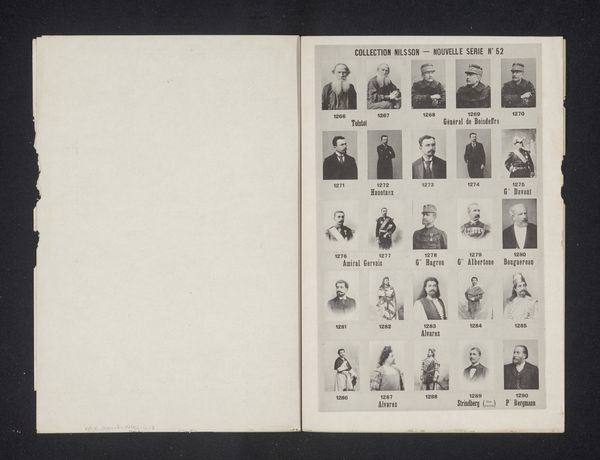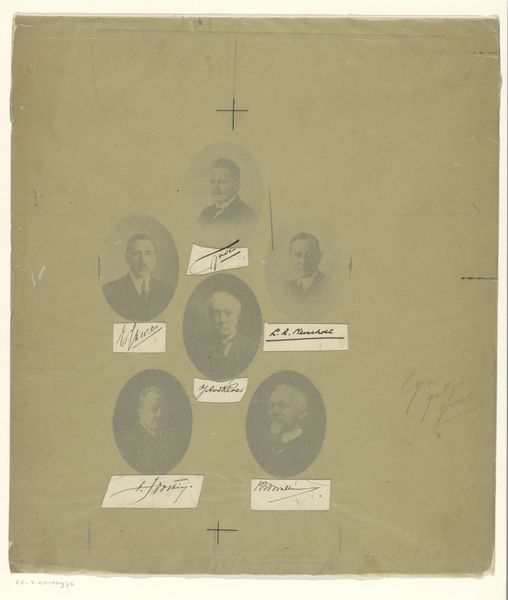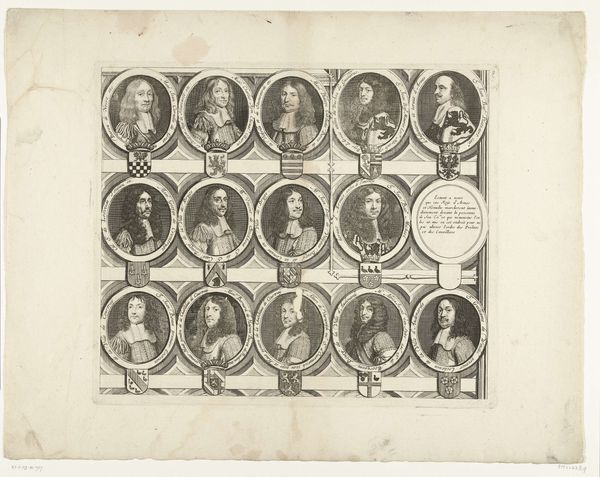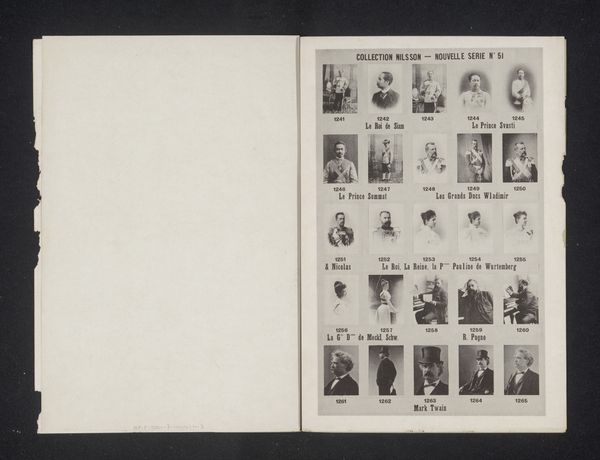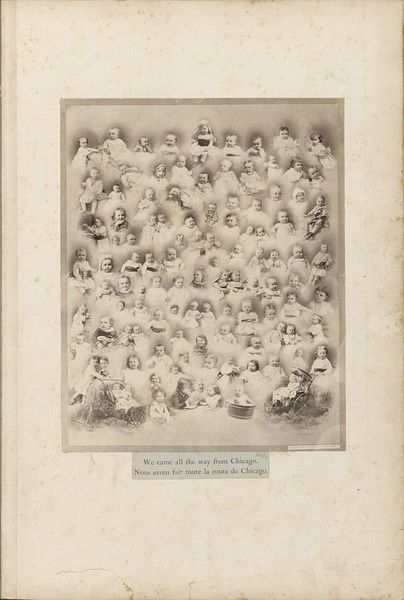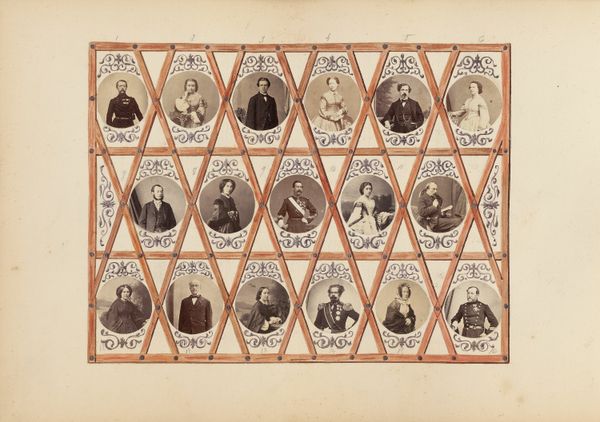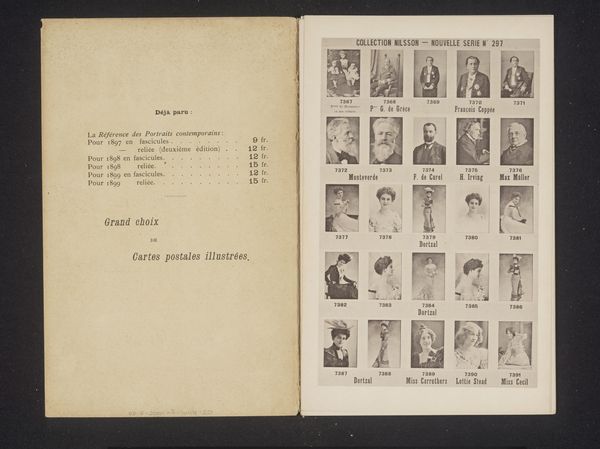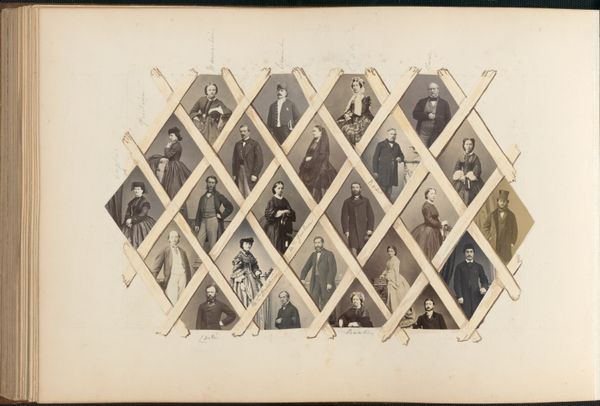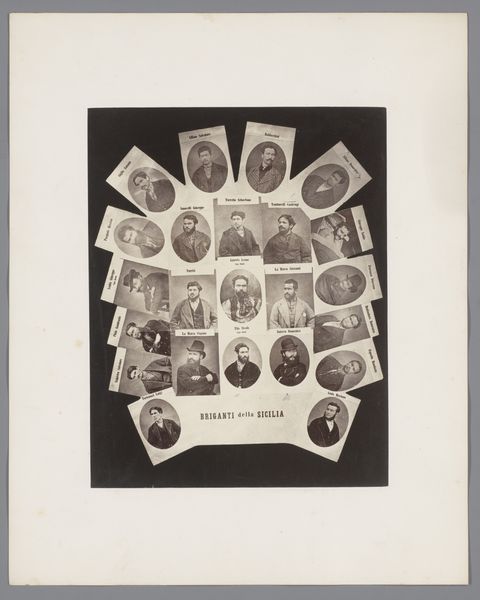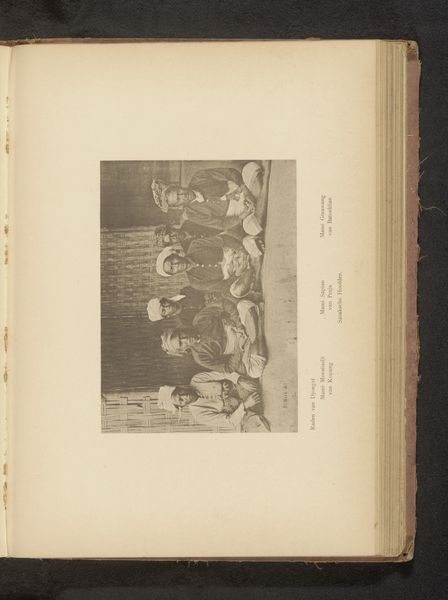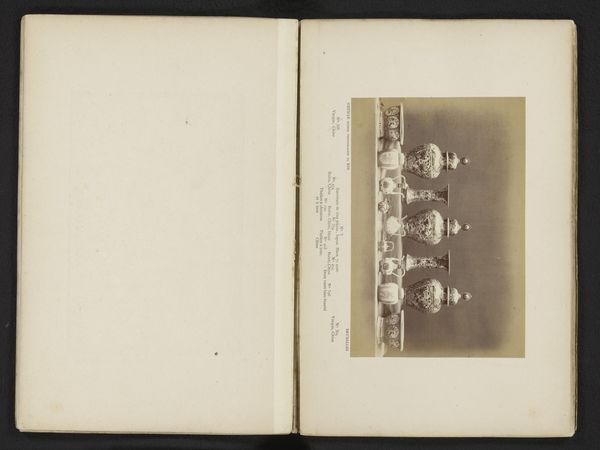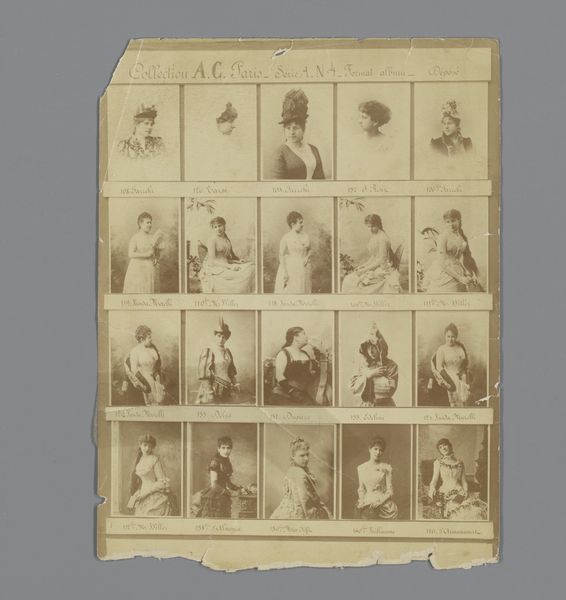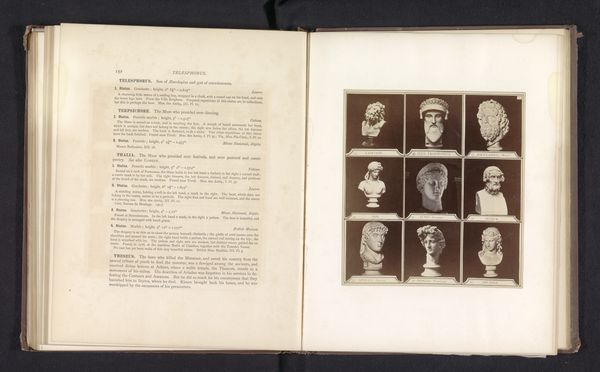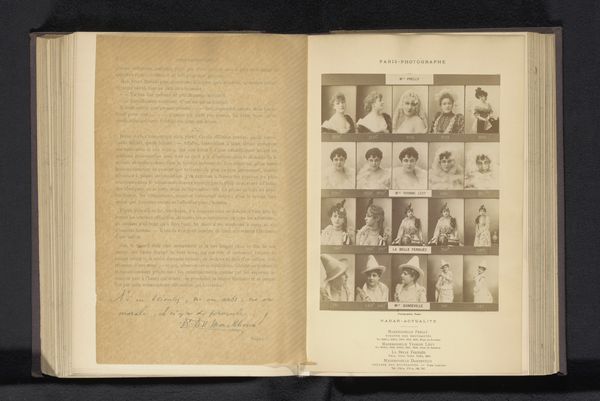
Legenda van de portretten van ministers op het congres van Wenen, 1815 1815 - 1820
0:00
0:00
drawing, pencil
#
portrait
#
drawing
#
neoclacissism
#
pencil sketch
#
pencil
#
sketchbook drawing
#
pencil work
#
history-painting
Dimensions: height 281 mm, width 730 mm
Copyright: Rijks Museum: Open Domain
This is a print portraying the ministers at the Congress of Vienna in 1815, created by an anonymous artist. Dominating the composition are the portraits themselves, each a face representing power, diplomacy, and the reshaping of Europe after Napoleon. Consider the visual language of portraiture itself—how, across millennia, leaders and powerful figures have sought to immortalize their visages. Think of Roman busts or Renaissance paintings, each echoing a desire to control legacy and shape perception. The gathering of these faces in one print evokes a collective power, reminiscent of classical gatherings of gods on Mount Olympus. Yet, observe how different this is. The individual portraits are almost clinical, arranged in rows, lacking the dynamism of historical paintings. Does this reflect a shift in power dynamics, away from heroic individualism towards a bureaucratic collectivism? The faces, though distinct, blend into a sea of sameness, suggesting a new world order where individual glory is subsumed by the machinery of state. The psychological weight of this image lies in its representation of control—the attempt to freeze history, to impose order on chaos. A powerful, yet ultimately futile gesture, given the ceaseless flow of time.
Comments
No comments
Be the first to comment and join the conversation on the ultimate creative platform.
